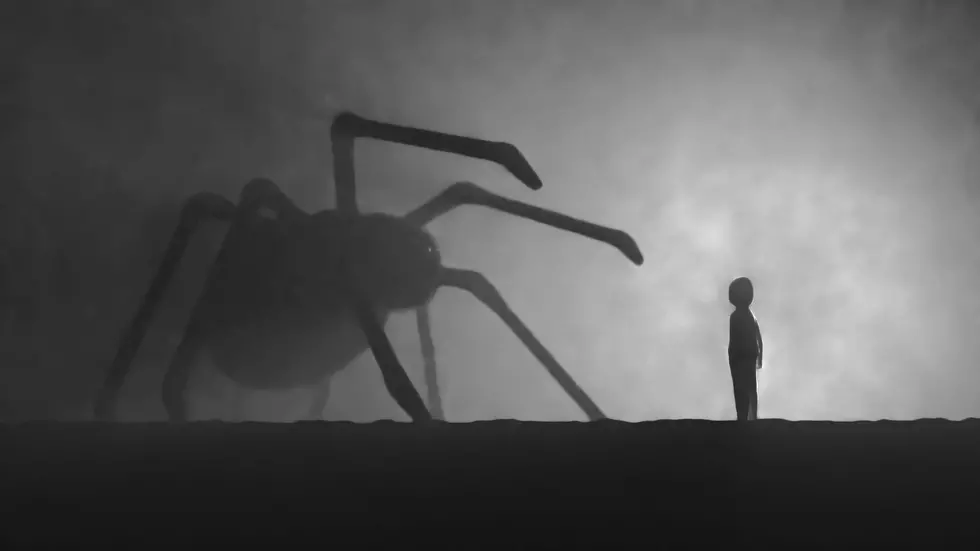
It’s National “Be Kind to Spiders” Week!
April 1 through April 7 is Be Kind to Spiders Week — Celebrate Spiders this week! Yipee!
This picture is of Venezuelan Chef Nelson Mendez. He shows a spider to camera before he cooks it on stage during a lecture on the third day of 'Madridfusion' International Gastronomic Fair in the 'Palacio de los Congresos' on January 26, 2012 in Madrid, Spain.
Not very kind, if you ask me. Would you ever eat a spider?
I found some interesting strange but true facts about spiders from the Smithsonian Science website:
Did you know...
1. Black widows are known for cannibalizing their mates, but this doesn’t actually happen all the time. The exception seems to be the red widow, where the male force feeds himself to the female by placing himself into her mandibles. If she ‘spits him out,’ so to speak, he will keep placing himself there until she eventually eats him.
2. Certain species of salticids (Jumping Spiders) can see into spectrums we humans cannot. A few have been shown to be able to see both UVA and UVB light.
3. New-world tarantulas are capable of flinging off tiny irritating hairs, known as urticating hairs, to deter potential predators, similar to a porcupine using its quills as a defense.
4. While most spiders are solitary animals, there are some that form communities building large communal cobwebs. Colonies can number in the thousands of individuals and they will work together to incapacitate prey trapped in their webs and share the harvest with each other.
5. There are some ingenious ways spiders use to capture prey. For instance, the ogre-faced spider weaves a net between its front legs and then dangles above places where prey are likely to pass through. By using its web like a net, it scoops up hapless prey. Bolas spiders use a long line of silk ended with a spot of sticky glue (a bolas), swinging it at nearby moths to catch them, much like a fishing line.
6. For its weight, spider web silk is actually stronger and tougher than steel.
7. There are over 100 species of spiders that mimic ants by having evolved similar appearances and even similar pheromones. Most do it to evade predators, but a few do it to help them prey on ants.
8. The dance known as the tarantella is thought by some to have originated from the belief during the 16th and 17th centuries that the bite of a certain kind of wolf spider (named “tarantula,” being found in the Taranto region of Italy) would be fatal unless the victim engaged in frenzied dancing to certain music.
It doesn't seem like America's favorite cartoon cat is very fond of spiders either.
Do you have a fear of spiders? Is it your biggest fear?
More From MIX 108

![What Happens With This Wolf Spider, Will Haunt Your Dreams [VIDEO]](http://townsquare.media/site/164/files/2015/04/spider.jpg?w=980&q=75)

![Why Does This Guy Have a Huge Spider Tattoo on His Face? [PHOTO]](http://townsquare.media/site/757/files/2014/02/Spider.jpg?w=980&q=75)
![Don’t Be Scared, Fancy Spider Shows Off It’s Dance Moves [VIDEO]](http://townsquare.media/site/164/files/2013/12/peacock-spider.jpg?w=980&q=75)
![5 Flights Delayed at Kansas City International Airport due to Spider Infestation [VIDEO]](http://townsquare.media/site/164/files/2013/08/83841846.jpg?w=980&q=75)
![How Not to Kill a Spider [VIDEO]](http://townsquare.media/site/164/files/2012/11/spider-guy.png?w=980&q=75)
![Rare Spider Shuts Down $15 Million Highway Construction Project [VIDEO]](http://townsquare.media/site/164/files/2012/09/spider.jpg?w=980&q=75)
![Anchorwoman Arachnophobia News Blooper [VIDEO]](http://townsquare.media/site/164/files/2012/01/spider.png?w=980&q=75)
